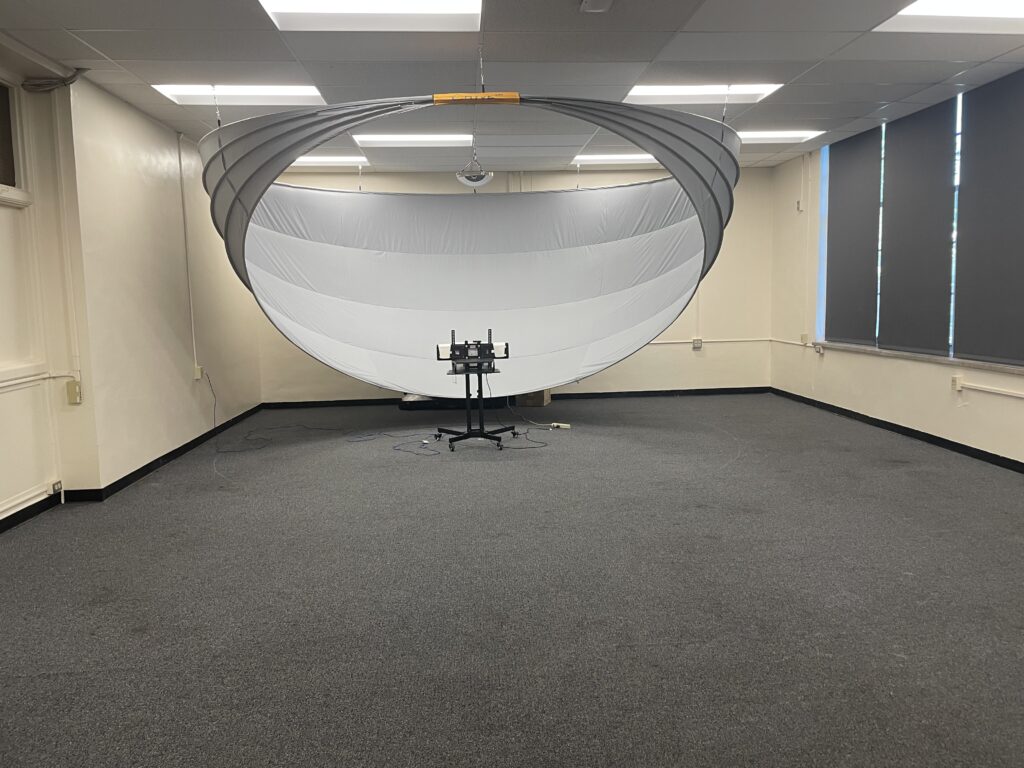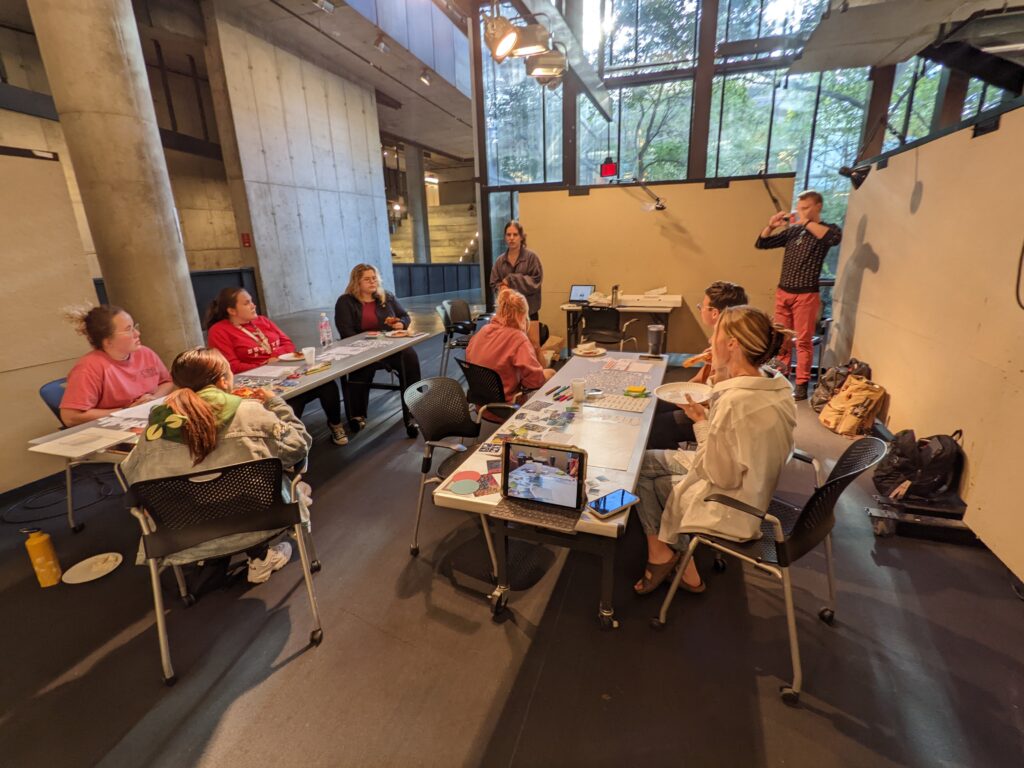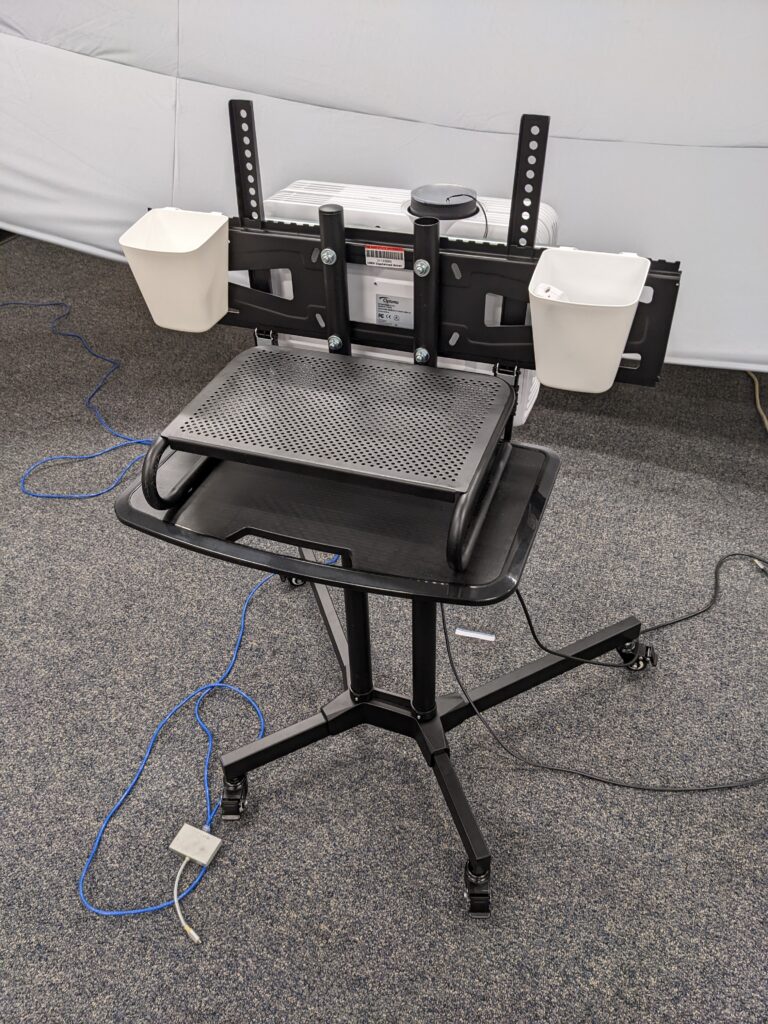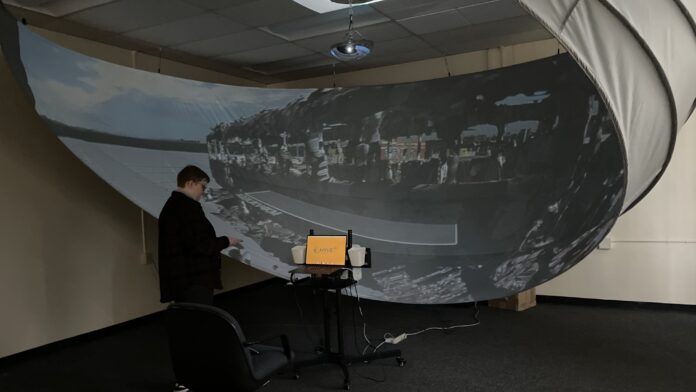Universities are knowledge hubs, providing access to libraries, teachings, and cutting edge technologies that allow ideas to thrive. The downside of this university bubble is exactly that, it is a bubble; those outside of this bubble feel intimidated by such a beast…… The Design for Social Innovation and Integration (DESIS Lab) seeks to remedy this problem through the integration of a Digital Public Participation Lab (DPP Lab) at Dominion Middle School. The DPP Lab will be a resource for community members and businesses to gain access to emerging technologies that support public participation and codesign activities. It will be available to users of all socioeconomic backgrounds and must pay attention to accessibility issues as it should be a resource for everyone. Currently, this lab is an empty room with only the Hyve-3D inside. The Hyve-3D is a collaborative virtual reality system without the need for a headset. It includes a domed screen that allows the user to step inside and be fully immersed, as well as a three-dimensional sketching. For my design capstone, DESIS LAB has asked me and two other students to activate this lab through design concepts that allow this lab to fulfill its various functions.

Because this lab has no target user or target function, the problem space is quite expansive and could include flexible seating, modular surfaces, branding, spatial design, and more. After talking with the project partner, aspects that are integral to the Lab are that it be adaptable, inviting and engaging with a designed aesthetic that follows the current DPP Logo as well as has a slight OSU presence. Having an empty room with specific problematic is like staring at a blank canvas waiting for inspiration to strike. This meant that using research to narrow down the problem scope into a specific issue that became the primary focus of this phase of the project. Trying to solve it all would only result in arbitrary and disorganized solutions. To begin understanding the needs of this space outside of the partners viewpoint, I visited other spaces that serve a similar purpose, such as makers spaces, libraries, technology labs, and co-working spaces. Thus began my primary research, with observations and conversations with the people at Idea Foundry, Emerging Technology Studio, Columbus Public Libraries, and the Innovation Studio.
One of the biggest hurdles was the fact that we did not know how this space would be used because it is the only Hyve-3D in the US; there are no diagrams that lay out how teachers would use it, how creatives would use it, and how middle schoolers would. Because of this, including stakeholders in the design process was integral in understanding how the space would be utilized, and what behaviors would go on in the space. Working on a limited schedule, Mylo, Sophie, and I decided to team up and plan a co-design session with potential users that we had access to: design and architecture students. Before the session, the participants had a take-home activity that de-briefed them on the Hyve-3D and got them thinking about co-working spaces. The in-person part included two layers of collective visioning and an exercise where they evaluated fake prototypes of spatial set-ups of the DPP Lab.

The co-design session then facilitated a conversation about useability issues of the Hyve when two former users of the Hyve voiced their concerns about having middle schoolers interact with such a delicate technology.
Having focused so much on what was happening outside the Hyve-3D, these comments forced me to think more in depth about what was happening inside the Hyve. Since it is the central, and only technology currently inside of the DPP Lab, creating a welcoming atmosphere inside is integral to the functionality of the lab. From this observation came the realization that all the previous research hinted at this opportunity all along. My initial response to the project brief was, “how will people learn to use the Hyve?” In the secondary research, multiple articles touched on the fact that technology and place needed to work together to create a successful workplace. In the survey, when asked how comfortable people were with learning new technology such as VR, one of the responses said that they were very familiar with VR, but had never touched one because it gave them anxiety. Small hints were thrown at me throughout the whole process, but it wasn’t until hearing those who had used the Hyve and were familiar with the technology express their apprehension that I was able to funnel down my research. The Hyve-3D is the center of this room and the main reason people will be coming into this room, so solving the useability issues that are currently occurring inside the Hyve is central to the lab being used.

With a design opportunity in mind, I then had the chance to participate in a demonstration of the Hyve-3D for a group from IBM. During this demonstration, I was able to observe three different stakeholder groups; those completely new to the Hyve (from IBM), a Hyve-3D specialist (Will Nickley), and a designer as a user (Sophie). Each group gave insight into potential opportunities that were in the scope of the situation. At the start of the demo, Will struggled with orienting the screen, and I noticed that every time he moved the Macbook, the whole screen vibrated as a result of the podium being unstable. During the demonstration of the Hyve, the people from IBM were hesitant to step into the Hyve, and as they trickled inside, Will had to direct them where to stand. He also talked about how the eye was supposed to meet with the horizon line, so the perspective was slightly off depending on each individuals’ height. The cables also got in the way of the viable standing space. At the end of the demonstration, Sophie expressed concern with having to maneuver, iterate, and hold the iPad up all at once. All together, each of these individual issues got in the way of being fully immersed into the space, which is the original intention of the Hyve-3D. Addressing how these relationships affect one another is the key to creating a space where the user feels invited and comfortable with using a new and potentially daunting technology.




